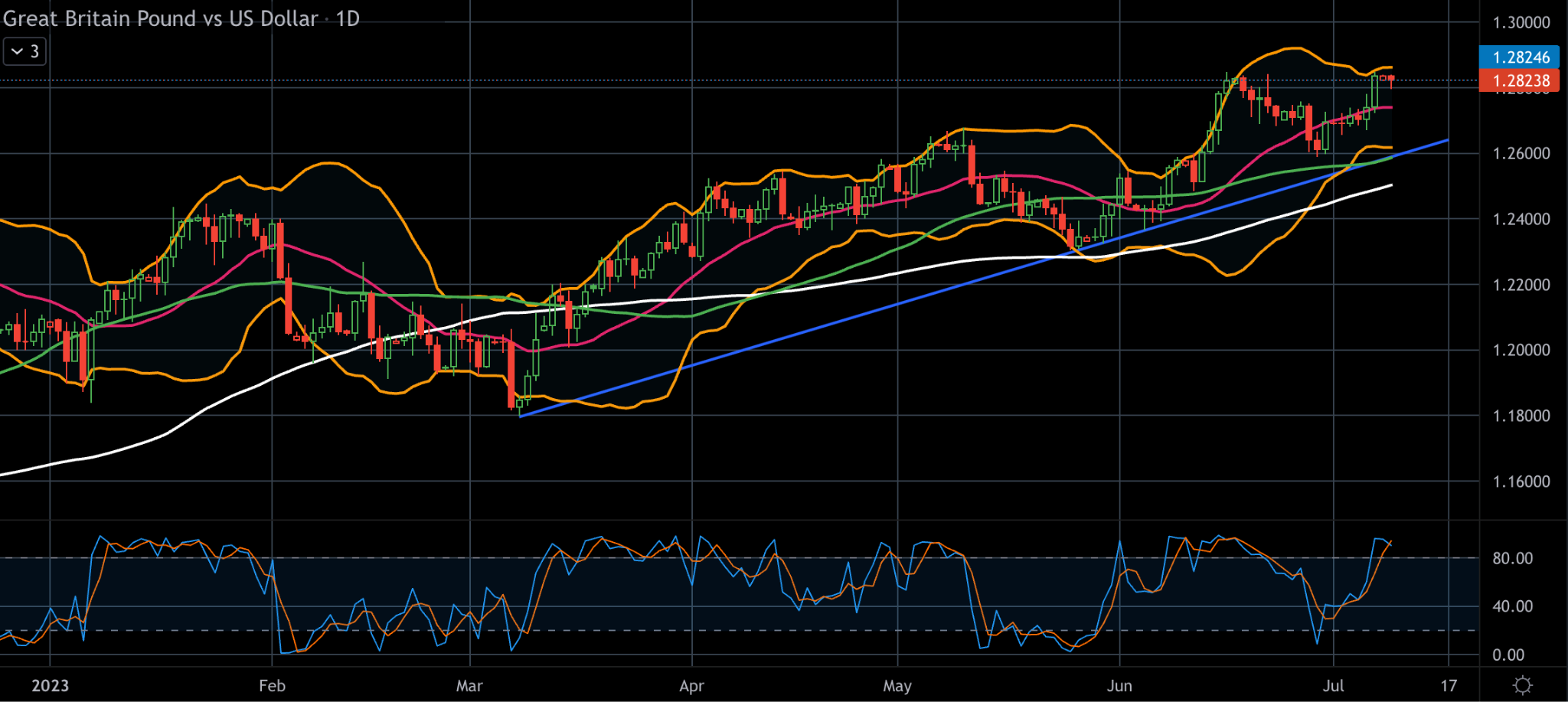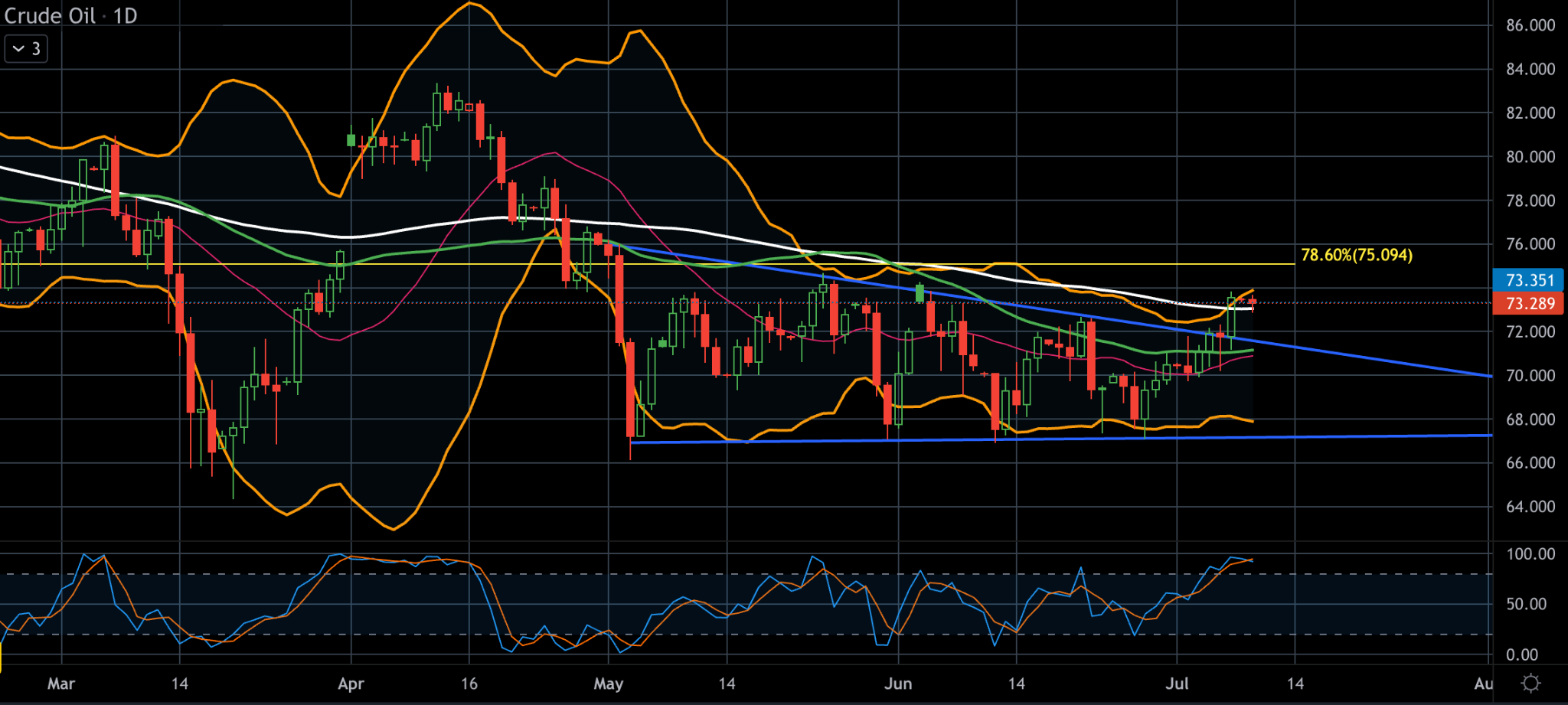This article was submitted by Antreas Themistokleous, market analyst at Exness.
This preview of weekly data looks at GBPUSD & USOIL, where economic data coming up later this week are the main drivers in the markets for the near short term outlook.
The most important economic data for this week are:
- British unemployment & Claimant count change on Tuesday at 06:00 AM GMT. The market is expecting the unemployment rate for the month of May to remain stable at 3.8% while unemployment benefits claims to also decline by another 22,000 in June.
- US inflation rate on Wednesday at 12:30 PM GMT. Both core and non-core inflation figures are expected to decline by 0.3% and 0.9% respectively. If this data is confirmed we might see the probabilities of a further interest hike on the Fed’s next meeting decline on the Fedwatch tool since the year over year figure of the non core inflation would be closer to the Fed’s target rate of 2%.
- BoC Interest rate decision on Wednesday at 2:00 PM GMT. The Bank will publish its next full outlook for the economy and inflation, including risks to the projection, in the Monetary Policy Report at the same time. The expectation is that the central bank will proceed with a single hike pushing the rates to 5%. If this is confirmed we might see some short term gains for the loonie against its pairs.
- Monthly British GDP on Thursday at 06:00 AM GMT. The expectations are for a decline of around 0.6% reaching the negative figure of -0.4%. If this comes to be true then the British quid might experience some minor losses in the short term, if any at all.
- Monthly US PPI on Thursday at 12:30 PM GMT. Producer price index is expected to rise by 0.5% which could affect the next inflation publication to increase also. When PPI increases means that costs are rising for the producers which could be rolled over to consumers resulting in increased inflation.
GBPUSD, daily
The negative Claimant change which is expected by market participants as well as the stable unemployment figure are possibly expected to support the quid against its pairs including the US Dollar. Also if we take a look at the British 30 year gilt we will see that the percentage of 4,715% is near the yearly high of almost 5% while the corresponding American 30 year treasury bond yields are currently at 4,064%. This means that capital is flowing more aggressively in favor of the British pound compared to the US dollar which supports the narrative of bullish action on the cable chart.


